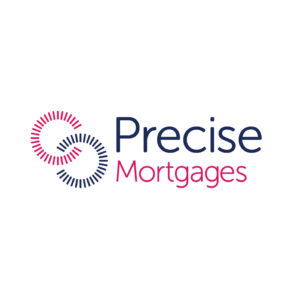The bridging loan market in the UK is expanding rapidly, with over 20 companies offering commercial bridging finance at various rates in 2025.
This article will explore who the current top bridging loan providers for business are and explain a bit about each company. If you would like advice about the right finance for your company, contact us for the latest rates from various lenders.
What are the Best Bridging Loan Companies in 2025?
| Company | Loan Amount | Loan Term | Interest Rate | Fees | LTV | Special Notes |
|---|---|---|---|---|---|---|
| United Trust | £125k – £15m | Up to 12 months (regulated), up to 36 months (unregulated) | N/A | Valuation fee (usually); Application fee (limited occasions) | Up to 70% | Regulated and unregulated bridging loans; first, second, and combination charges |
| Octopus Bridging Loans | N/A | Up to 24 months | From 0.70% per month | N/A | Up to 70% | Residential and commercial loans |
| Greenfield Mortgages | £26,000 – £5,000,000 | Up to 12 months | N/A | N/A | Up to 70% (100% with additional security) | Regulated and unregulated loans |
| LendInvest | £75,000 – £15,000,000 | Up to 12 months | N/A | 2% arrangement fee | Up to 75% | Regulated and unregulated loans |
| Precise Mortgages | £50,000 – No upper limit | Up to 12 months (regulated), up to 18 months (unregulated) | From 0.74% | 2% product fee; £145 assessment fee; £40 redemption administration fee | N/A | Regulated and non-regulated bridging loans |
| Funding 365 | £100,000 – £10,000,000 | 3 to 24 months | From 0.79% | At market rate, provided upon application | N/A | No loan acceptance fees, early repayment penalties, or hidden exit fees |
| MT Finance | £50,000 – £10,000,000 | 1-24 months | From 0.99% | No up-front fees, no exit fees, no ERCs | Up to 70% | 1st and 2nd charge loans |
| Tuscan Capital | N/A | N/A | N/A | N/A | Up to 70% | Unregulated bridging for personal and semi-commercial properties |
United Trust Bridging Loans

United Trust is a specialist provider of alternative finance, including bridging, asset, business loans and development finance. It is currently experiencing rapid growth, partly due to a partnership with the British Business Bank around lending for smaller house builders.
It offers regulated and unregulated bridging loans, using a combination of 1st and 2nd charges. It offers loans between 75k and 15m, requiring a minimum property value of 150k for security.
| Summary | Details |
|---|---|
| Loan Amount | £125k – £15m |
| Regulated Loan Term | Up to 12 months |
| Unregulated Loan Term | Up to 36 months |
| Charges | First, second, and combination charges |
| Early Repayment Charges | None |
| Interest Calculation | Daily |
| Monthly Repayments | Not required |
| Fast Track Process | Available for certain applications |
| Security Types | Residential, HMO, mixed-use, land with planning, commercial property |
| Loan-to-Value (LTV) Ratio | Up to 70% |
| Security Property Locations | England, Wales, Scotland |
| Upfront Fees | Valuation fee (usually); Application fee (limited occasions) |
| Loan Purpose | Various, including property purchase, downsizing, auction purchases, property improvement, portfolio restructuring, etc. |
| Regulated Bridging Loans | Offered by Financial Conduct Authority (FCA) regulations |
| Early Loan Repayment | Allowed |
| Acceptable Borrower Types | LLPs, SPVs, trusts, SIPPs, offshore companies |
| Regulatory Authorisation | Authorised by the Prudential Regulation Authority (PRA) and regulated by the Financial Conduct Authority (FCA) and the PRA |
Octopus Bridging Loans

Part of the larger Octopus Group, OBL offer residential and commercial loans from as little as 0.75% PCM for up to 24 months. The loans can be used for acquisitions, property finance or equity release, and you’ll be benefiting from an award-winning team that can lend up to 25m.
Originally an investment group, Octopus Finance manages funds of over 6bn, meaning this ambitious company is bringing a lot of resources to making its offerings competitive.
| Summary | Details |
|---|---|
| Residential Bridging Loans | Expertise in residential bridging loans and buy-to-let, alongside commercial and development sectors |
| Refurbishment Loans | Funding for modernising or retrofitting secondary residential assets, up to £200k for various refurbishment projects |
| – Interest Rate | From 0.70% per month |
| – Maximum LTV (Loan-to-Value) | 70% |
| – Loan Term | 12-18 months |
| – Interest Rate | From 0.55% per month |
Greenfield Mortgages

Founded in 2011, Greenfield is a specialist bridging lender chaired by Steve Smith, who founded Poundland. Greenfield is also a lender patron of the National Association of Commercial Finance Brokers, offering both regulated and unregulated loans and boasting a turnaround time of as little as a week.
They can arrange finance from £26,000 to £5m for a loan length of up to 12 months.
| Product Summary | Details |
|---|---|
| Geographical Coverage | England and Wales |
| Loan Amount | £26,000 – £5,000,000 |
| Loan Term | Up to 12 months |
| Loan-to-Value (LTV) Ratio | Up to 70% (100% with additional security) |
| Turnaround Time | Funds can be released in 7 days |
| Minimum Income Requirement | None |
| Monthly Payments | No monthly payments; bullet-repayment on redemption |
| Loan Types | Both FCA regulated and unregulated loans available |
| Other Information | All cases considered and competitively priced on their own merits |
LendInvest

Considering one of the fastest growing Fintech firms in the UK, LendInvest has huge ambitions. Backed by Skype founder Niklas Zennström’s European venture capital investment fund Atomico, it boasts an extremely diverse capital base and a powerful group of institutional investors, including Citibase.
LendInvest offers bridging finance for up to 75% of the loan value, lending up to £15m.
| Key Features | Regulated | Unregulated | Refurbishment Bridge | Refurbishment GDV | New Development Exit | Development |
|---|---|---|---|---|---|---|
| Max Loan Size | £3,000,000 | £15,000,0001 | £1,500,0001 | £1,500,0001 | £30,000,000 | £30,000,000 |
| Min Loan Size | £75,000 | £75,0002 | £100,000 | £500,000 | £250,000 | £1,000,000 |
| Max LTV/LTGDV | 55% (net) | 75% | 73% (net)3 | 70% (GDV) | 80% | 65% (GDV) |
| Max Loan Term (months) | 12 | 12 | 12 | 18 | 18 | 24 |
| Arrangement Fee | 2% | 2% | 2% | 2% | 2% | 2% |
| Interest Method | Rolled | Serviced or Retained | Rolled | Rolled | Rolled | Rolled |
| Regions | England, Wales and Scotland | England, Wales and Scotland | England, Wales and Scotland | England, Wales and Scotland | England, Wales and Scotland |
Additional Information:
- For loans over this limit, please get in touch with Lendinvest directly to discuss.
- In addition, loans over £1m are reduced to 70% LTV.
- For Commercial Bridging, the minimum loan size is £200k.
- Max LTV for Semi-commercial properties is 70%.
- Max LTV for commercial and land properties is 60%.
- For Refurbishment GDV loans, the maximum loan to GDV is 75% for loans below £1m. For loans above £1m, the maximum loan to GDV is 70%, including interest and fees.
Precise Mortgages

Precise Mortgages offer both regulated and non-regulated bridging loans, primarily arranged through trusted brokers.
They accommodate a broad range of loan amounts, initiating from £50,000, and uniquely, with no upper limit. Borrowers can opt for a minimum of one month, extending to a maximum of 12 months for regulated loans and 18 months for non-regulated ones.
When it comes to interest options, Precise Mortgages presents a well-thought-out approach. Retained interest is available for regulated loans, while borrowers of non-regulated loans have the privilege of choosing between retained or serviced interest.
The firm operates with a minimum property value threshold of £100,000 for properties located in London and £75,000 for properties in other areas.
In terms of fees, Precise Mortgages imposes a product fee of 2%, accompanied by a £145 assessment fee and a £40 redemption administration fee. They uphold a customer-friendly stance by exempting early repayment and exit fees, and it’s notable that standard bridging loans typically do not carry a separate valuation fee.
65% LTV | 70% LTV | 75% LTV | Facility Fee/Product Fee | |
|---|---|---|---|---|
| Standard Bridging | 0.74% | 0.79% | 0.84% | 2.00% |
| Tier 1 Refurbishment (Regulated) | 0.74% | 0.79% | 0.84% | 2.00% |
| Tier 1 Refurbishment (Non-Regulated) | 0.74% | 0.79% | 0.84% | 2.00% |
Product Features:
- No exit fee
- No early repayment charges. Please note, a minimum of 1 month’s interest must be paid.
- Retained interest for the full term of the loan is available for both regulated and non-regulated bridging. For non-regulated bridging, monthly payment options are available.
- All regulated mortgage contracts must be submitted on an advised basis only.
- The lower of the LTV/LTP will be used for assessment.
- A £145 assessment fee applies to all products. This can be deducted from the advance upon completion.
Funding 365 Bridging Finance

Three structured finance experts from major financial institutions came together to form Funding 365 in 2013. Much of the ethos of the company is around ethics and personal relationships in contrast to a market they say has been flooded by standard product offerings and a lack of transparency.
Their rates start from 0.75% pcm, and there are no loan acceptance fees, early repayment penalties or hidden exit fees.
| Up to 65% LTV | Up to 75% LTV | Broker Fee | Procuration Fee | Exit Fee | Early Repayment Charge | |
|---|---|---|---|---|---|---|
| Interest Rate | From 0.79% | From 0.84% | 1.5% | From 2% | None | None |
Loan Details:
- Loan Sizes: £100,000 to £10,000,000 (Larger loans considered upon application)
- Loan Terms: 3 to 24 months
- Locations: Across England and Wales
- Legal fees: At market rate, provided upon application
- Valuation fee: At market rate, provided upon application
Loan Uses:
- Buying or refinancing residential property
- Development exit and marketing
- Short term cash flow requirements
- Light to medium property refurbishment
- Land with or without planning
- Properties with adverse environmental conditions
- Farms or agricultural property
- First charge unregulated loans across England & Wales
- Residential short lease properties considered
- Adverse credit history considered
Permitted securities:
- Unregulated residential properties
- HMOs
- Buy to lets
- Student accommodation
- Holiday lets with no title restriction
MT Finance

MT Finance is a property finance lender based in London, England, with a focus on bridging loans and auction finance. Established in 2008, MT Finance operates as an asset-based lender, meaning their loan assessments are based primarily on the value of the asset, not the applicant’s credit history. Their approach takes into account the asset’s worth and the borrower’s future intentions, offering flexibility to their clients.
In addition to their core operations, MT Finance has been recognised with several awards for their customer service. They are also members of several industry bodies, including the Association of Short Term Lenders (ASTL), the National Association of Commercial Finance Brokers (NACFB), and the Financial Intermediary & Broker Association (FIBA).
MT Finance provides a variety of services, such as:
| Key Features | Details |
|---|---|
| Interest Rate | From 0.99% |
| Loan Amounts | From £50,000 – £10,000,000 |
| Loan Terms | From 1-24 months |
| LTV | Up to 70% |
| Property Types | Residential, Commercial & Semi-Commercial |
| Credit Considerations | Adverse credit, CCJs and arrears considered |
| Fees | No up-front fees, no exit fees, no ERCs |
Additional Features:
- 1st and 2nd charge loans are offered.
- They do not require credit scoring.
- They take a view on all credit histories, including borrowers with CCJs and a history of arrears.
- They do not require a minimum credit score, accounts or proof of income – instead, they focus on the property and the borrower’s future plans.
Tuscan Capital

Launched in 2018, Tuscan Capital was founded by the Former CEO of Omni and Fortwell Capital Colin Sanders. Funded by Quilam Capital. It offers unregulated bridging for personal and semi-commercial properties to a maximum LTV of 70%.
They also offer a competitive refurbishment funding package targeting commercial developers to a maximum property value of £3m.
Key Points:
| Loan Amount | Interest Rate | Arrangement Fee | Exit Fee | Early Repayment Fee |
|---|---|---|---|---|
| Up to £500,000 | 0.54% per month | 2% | 0% | 0% |
| £500,001 – £1,000,000 | 0.49% per month | 2% | 0% | 0% |
| £1,000,001 – £1,500,000 | 0.44% per month | 2% | 0% | 0% |
| £1,500,001 – £2,000,000 | 0.39% per month | 2% | 0% | 0% |
| Over £2,000,000 | 0.34% per month | 2% | 0% | 0% |
- Interest rates are variable, ranging from 0.34% to 0.54% per month, depending on the loan size.
- An arrangement fee of 2% of the loan amount is applicable.
- No exit fees are charged.
- There are no early repayment fees.
- Loan-to-value (LTV) can be up to 70%.
- The loan terms can extend up to 12 months.
Factors to consider when choosing a bridging loan company
Here are some factors to keep in mind when researching your bridging loan:
- Repayment terms: Take care to ensure repayment terms fit your needs so you don’t pay more than necessary or find yourself hit by hidden charges
- Interest rates and fees: These costs can add up quickly, so choosing a company with competitive rates and reasonable fees is important.
- Repayment options: Do you need a flexible repayment plan or prefer a fixed schedule? Some companies may also allow early loan repayment, which is worth investigating.
- Loan processing time: How quickly do you need the loan?
- Customer service and support: Does the company has a customer service team available to answer any questions or concerns?
- Reputation and credibility: Research the company’s history and reputation to ensure they have a good track record. Trustpilot is a good resource for this.
- Loan security: Find out what security the loan company requires and whether it’s appropriate for you.
Which Banks Offer Bridging Loans?
While many banks do offer bridging loans, they have grown more reluctant to lend since the financial crisis of 2007-2008. In many ways, this very situation fuelled the tremendous rise in alternative lenders who arose to fill the gap in the bridging market.
In each instance, we look for the best possible loans for you based on the complete variety available in the current market. That does include some offerings from traditional banks, but more often than not, the deals offered are significantly less appealing, with a higher bar to entry.
How Much Does a Bridging Loan Cost?
Bridging loans are amongst the most expensive forms of short-term finance. Lenders will generally charge at least 1% interest per month, plus another 1% as an arrangement fee and a further percent as an exit fee.
With these figures in mind, bridging loans are best suited to lucrative, short-term deals such as those in the property development sector, where time is of the essence. Having a clear exit strategy is also essential.
Alternatives to Bridging Loans
While bridging loans are often a go-to solution for those seeking quick and short-term finance in the UK, they’re not the only choice available. The following alternatives to bridging loans could be more suitable, depending on individual circumstances:
1. Personal Loans: Personal loans can be a viable alternative to bridging loans, particularly for small to moderate amounts. They typically offer lower interest rates compared to bridging loans and can be obtained from various sources, including banks, building societies, and online lenders.
2. Secured Loans: A secured loan, sometimes referred to as a homeowner loan, can be a practical alternative. These loans are secured against an asset you own, typically your property. This option can be ideal for homeowners with sufficient equity in their property, as it typically allows for larger borrowing amounts and lower interest rates.
3. Remortgaging: If you have sufficient equity in your property, remortgaging could be an option to raise the necessary funds. This approach involves replacing your current mortgage with a new one, either with your existing lender or a new one. You could potentially access better interest rates or release equity from your property. However, keep in mind that there may be early repayment charges if you change mortgage providers during the term.
4. Development Finance: If your requirement for funds relates to property development, then development finance may be a suitable alternative. This type of loan is designed specifically to fund the building or renovation of properties and is typically based on the project’s gross development value.
5. Asset Financing: Asset finance can be a smart choice if you possess valuable assets, such as vehicles, equipment, or other high-value items. This kind of financing allows you to leverage the value of these assets to secure a loan.
Keep in mind that each of these alternatives has its pros and cons, and the most suitable option depends on your individual financial circumstances, the purpose of the loan, and the time frame within which you need the funds.
Who Are The Best Residential Bridge Loan Lenders?
The following table presents a compilation of the top 10 direct lenders for residential bridge loans, as per their respective Trustpilot ratings.
These ratings offer a measure of the customer satisfaction and overall service quality of each lending institution. Each lender is ranked in descending order based on their Trustpilot rating, starting from the highest-rated lender, Assetz Capital, down to OakNorth.
| Rank | Lender | Trustpilot Rating |
|---|---|---|
| 1 | Assetz Capital | 4.9 stars |
| 2 | Together Commercial Finance | 4.7 stars |
| 3 | OakNorth | 4.5 stars |
| 4 | Finbri | 4.5 stars |
| 5 | LendInvest | 4.5 stars |
| 6 | Market Harborough | 4.6 stars |
| 7 | Precise Mortgages | 4 stars |
| 8 | Hampshire Trust Bank | 4.5 stars |
| 9 | Kuflink | 4.5 stars |
| 10 | Octane Capital | 4.4 stars |
Frequently Asked Questions (FAQs)
To compare bridging loan providers, consider factors such as interest rates, fees, loan-to-value (LTV) ratios, repayment terms, and customer reviews. Always check for hidden fees.
Interest rates for bridging loans in the UK vary depending on factors such as the lender, loan size, LTV ratio, and borrower’s credit history. Rates generally range from 0.5% to 2% per month, with lower rates for larger loans and borrowers with strong credit profiles.
Bridging loan applications can be approved within 24-48 hours, with funds often available within a week or less. The exact timeline depends on the lender and the complexity of the borrower’s situation.
As with any financial product, there are risks associated with bridging loans. These include higher interest rates compared to longer-term loans, potential penalties for early repayment or default, and the risk of being unable to repay the loan at the end of the term.



